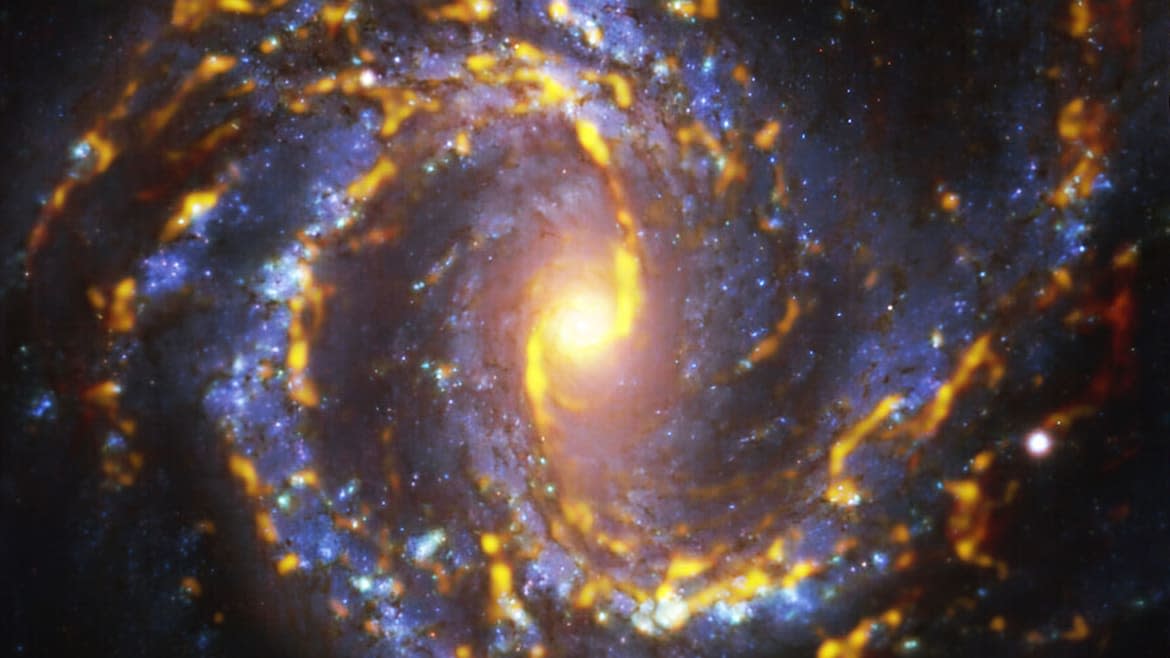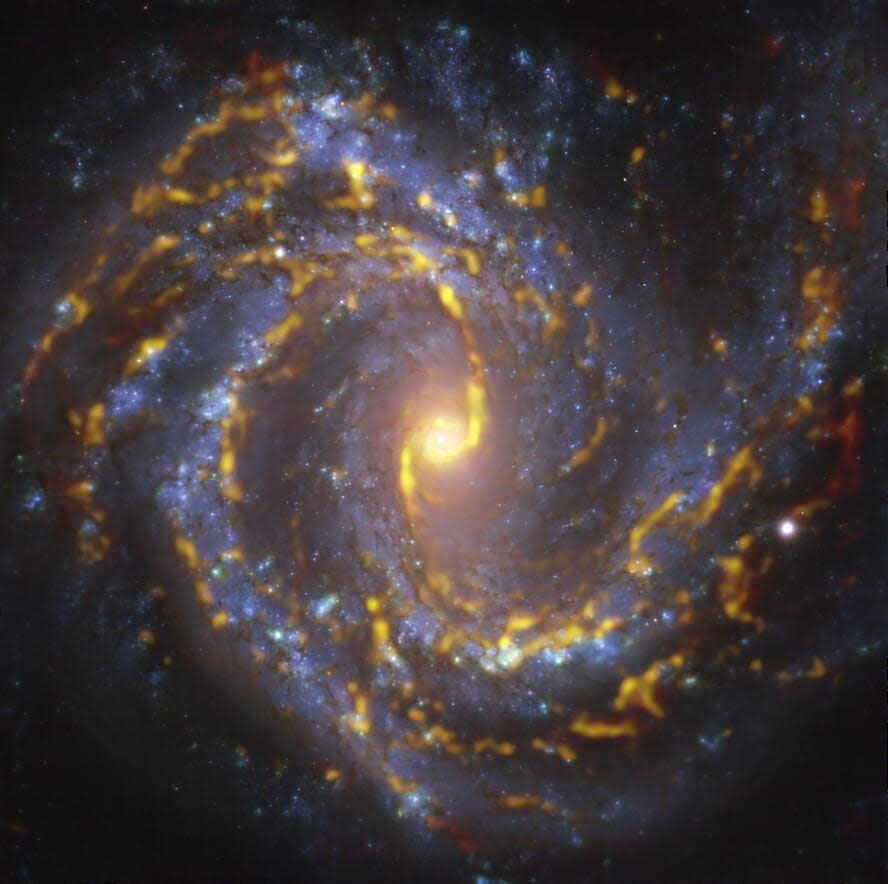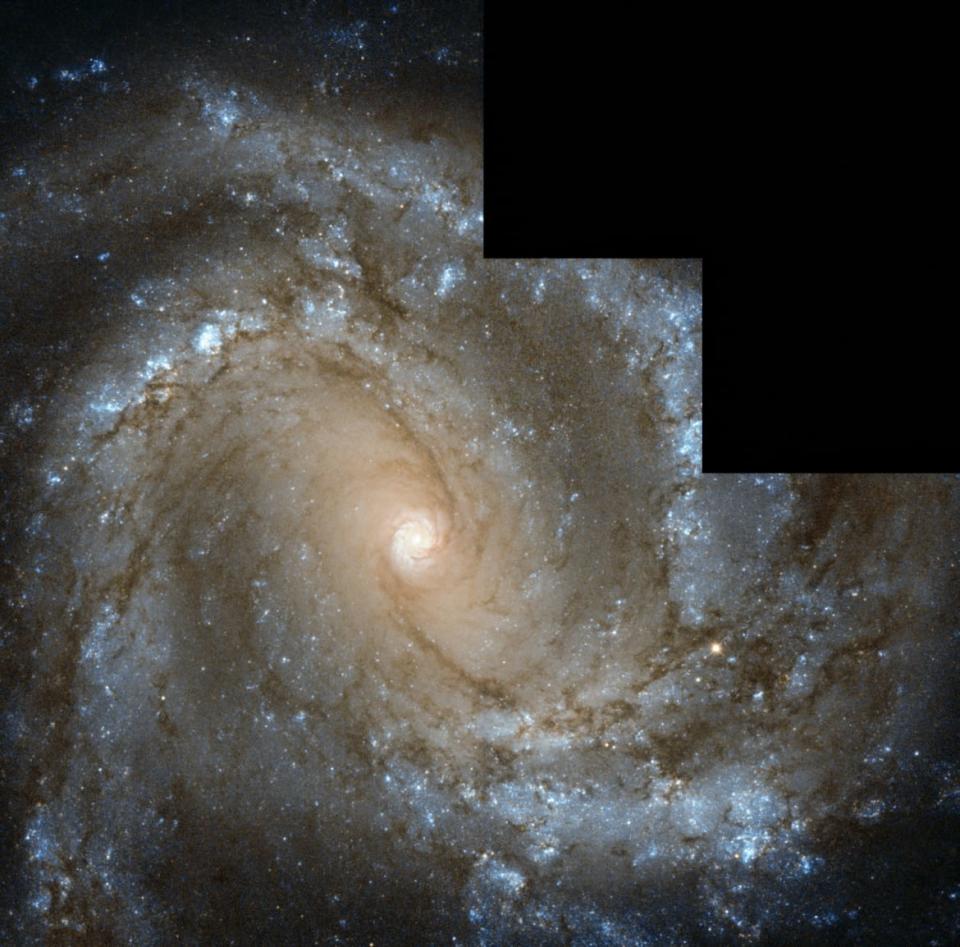This Hypnotizing Spiral Galaxy Can Tell Us How Stars Are Born

You’re going to want to set aside a few minutes today to take a deep breath and get lost in this amazing new photo. Behold NGC 4303: a spiral galaxy 55 million light-years away in the Virgo constellation. It is absolutely hypnotizing.

The new image was built out of data collected by the Atacama Large Millimeter/submillimeter Array (ALMA) situated high in the Chilean Andes. This is far from the first ever photo of NGC 4303, but it has never before been depicted in such a vibrant fashion before. You can see a radiant, golden glow emanating from the center of the galaxy’s core and streaming outwards—outlining the structure of the stellar gas from which stars form. The tendrils in blue show off stars that have already been formed and evolved.
These new colors are thanks to ALMA’s ability to peer at NGC 4303 in other wavelengths in order to give it better definition and determine what kind of elements it’s composed of. Previous images of the galaxy, like this one taken by the Hubble Space Telescope, are beautiful in their own right, but the intense light makes it difficult to truly discern the composition and structure.

NGC 4303 as seen by the Hubble Space Telescope.
In fact, the new data, collected by the European Southern Observatory that runs ALMA, is an outgrowth of the Physics at High Angular Resolution in Nearby GalaxieS (PHANGS) project, which employs both ground-based and space-based instruments for galactic observations across the electromagnetic spectrum. A big trend in astronomy these days is to make a more focused attempt at studying distant structures using varying forms of radio, infrared, optical, and ultraviolet data.
To that end, images like these are more than just evocative eye candy for astronomers and space obsessives alike. They are used by astronomers to study exactly how the confluence and interaction of gas and dust in space comes together to initiate the birth of new stars. They are especially keen on determining which galaxies might house the ingredients that can lead to life.
Get the Daily Beast's biggest scoops and scandals delivered right to your inbox. Sign up now.
Stay informed and gain unlimited access to the Daily Beast's unmatched reporting. Subscribe now.

 Yahoo News
Yahoo News 
